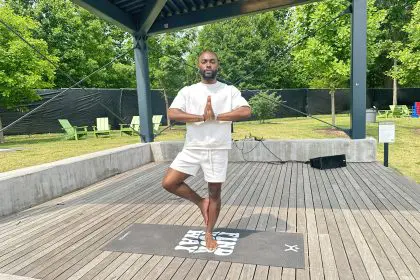
I’m sure you’ve seen the heart rate charts posted on the walls and cardio machines at your gym, but you aren’t sure how they apply to you and your goals.
What does your HR tell you about your level of fitness? How do you assess your heart rate without an expensive monitor or device? What cardiovascular zone should you be in?
Here, you’ll find the answers to all of these questions about your heart rate and its importance in your exercise regimen.
I recently began training for the upcoming triathlon racing season, which begins in the spring. Based on how I’ve felt during training sessions, I have been a little disappointed with my starting level of fitness (as is typical of most multi-sport athletes, I am never satisfied). It made me wonder if I should start paying more attention to my heart rate in an effort to reach my goals. When starting a new training program, having a basic understanding of your HR can help you to determine how hard to push yourself in order to make significant progress and stay safe.
HR during exercise informs us of how hard we are making our heart work to increase blood flow to the muscles and distribute oxygen throughout the body. This can be done by taking a neck or wrist pulse. Heart rate increases as exercise intensity increases. However, it will eventually plateau even while exercise intensity increases. When you have reached this level, it is known as your maximal HR. When I first began working out, I wasn’t interested in heart rate charts, and used the RPE (rate of perceived exertion) scale instead. While this is a simple and convenient way to gauge your workout intensity, it isn’t the most precise method. For those that want a more accurate measurement of effort, paying attention to your heart rate is worthwhile.
Resting heart rate
This ranges widely, depending on how active a person is, and their level of fitness. The average HR is 60-80 beats per minute. However, highly trained endurance athletes (such as marathoners and triathletes) have had heart rates as low as 28-40 beats per minute.
In order to calculate your resting heart rate, the pulse should be taken after at least eight hours of sleep and 12 hours of fasting, and not prior to an exercise session. Our bodies actually anticipate exercise, and HR automatically increases prior to any physical activity. Therefore, you are unlikely to get an accurate reading if your RHR is taken prior to a workout.
How to determine your target heart rate
Using a clock or a stopwatch, count your pulse for one full minute. Your target heart rate, or optimal training zone, is based on your maximum heart rate. MHR is estimated as 220 minus your age. For moderate-intensity physical activity, a person’s target heart rate should be 50 to 70 percent of MHR during moderate to intense physical activity, according to the Centers for Disease Control and Prevention. For vigorous exercise, your goal should be 70 to 85 percent.
Knowing how to use basic heart rate charts will help you push yourself to the appropriate level of exertion, in order to maximize your fitness and training goals. I am going to pay closer attention to my HR in an effort to become a faster triathlete in 2015. I will let you know how it goes!
Wishing you health and happiness,
HLJ
Holly Lowe Jones is a media professional, fitness expert, and ISSA-certified personal trainer. A member of the National Association for Health and Fitness, Jones is also a seasoned triathlete who competes in her spare time.
For more information, please visit her website www.hollylowejones.com.
Facebook: www.facebook.com/hollylowejones
Instagram and Twitter: HollyLoweJones















